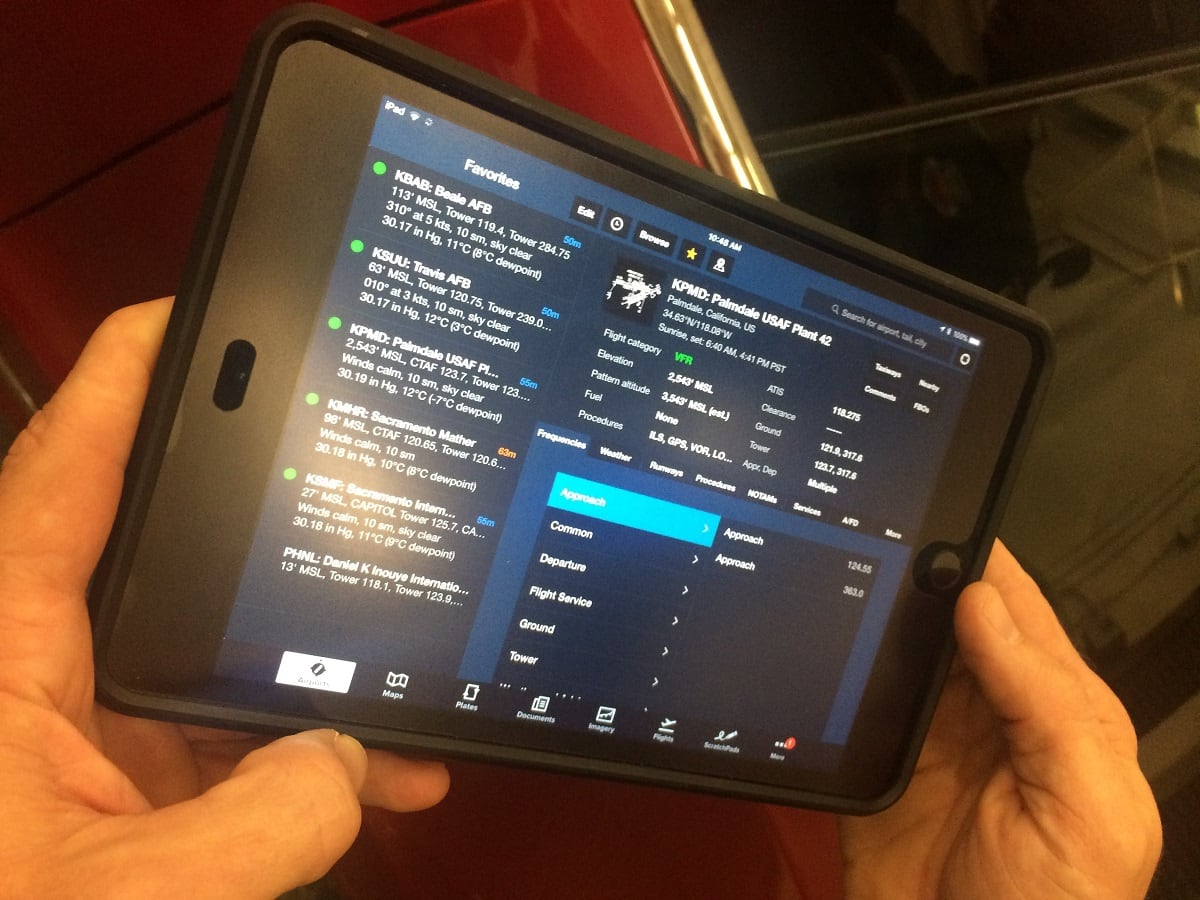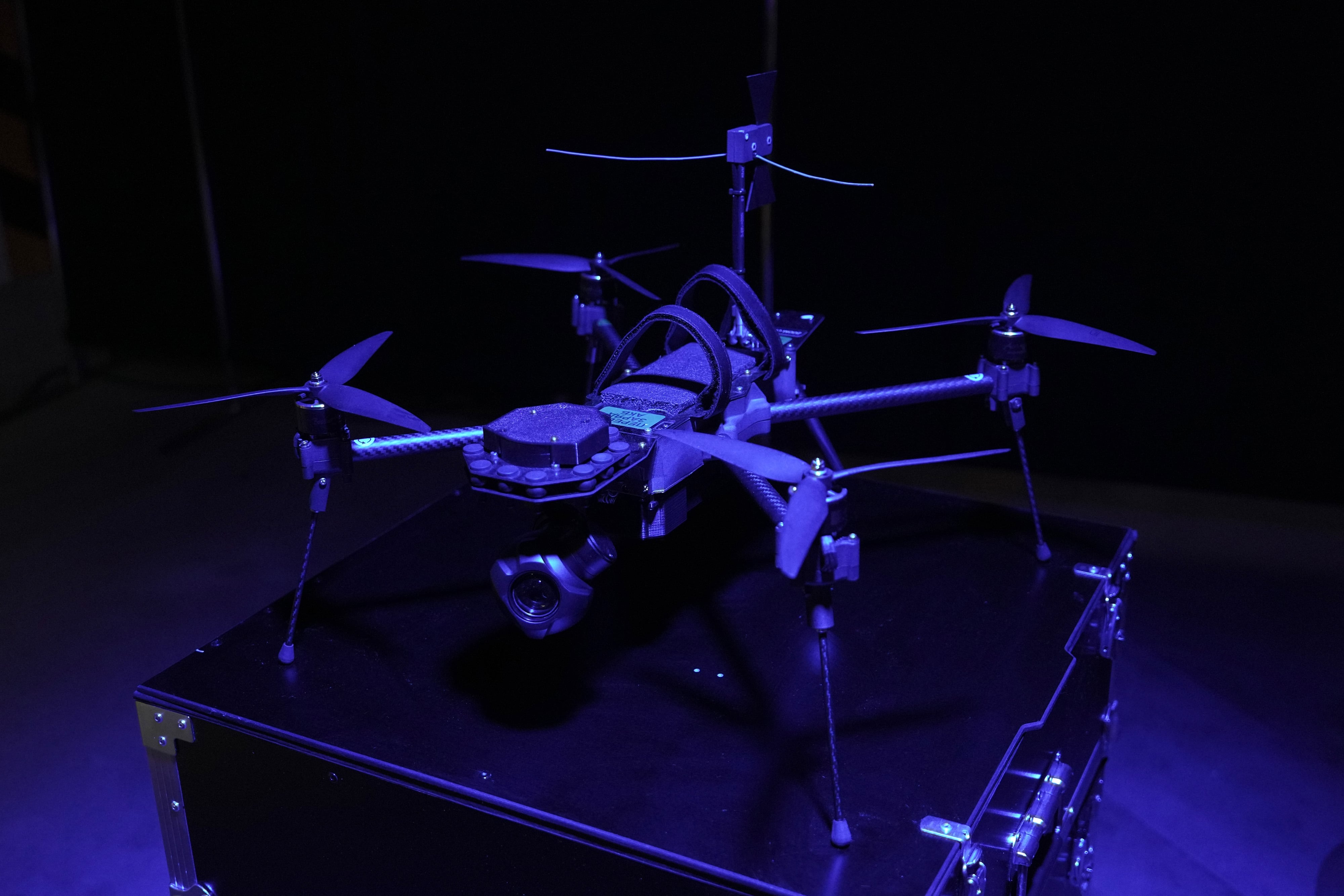BEALE AIR FORCE BASE, Calif. — The U-2 is one of the Air Force’s oldest aircraft, having been flown since the 1950s, but Beale Air Force Base’s 99th Reconnaissance Squadron isn’t waiting for the Pentagon to improve the venerable spy plane.
Instead, the squadron’s pilots, maintainers and mission planners have taken procurement into their own hands, and regularly chat with Silicon Valley companies about new commercial technologies that can make them more informed and effective.
U-2 pilots at Beale may still be operating an aircraft designed more than 60 years ago — one that flies so high that pilots still wear pressurized space suits — but now they also wear Garmin watches and bring tablets into the cockpit with them.
The combat system officers responsible for mission planning, navigation and sensor preparation — all challenging tasks due to the rapidly changing battlefield and the sophistication of the U-2’s sensors — will soon have new state-of-the-art computers to help synthesize data.
This gear and more was purchased by the squadron itself for about $3.3 million, and the 99th is working with leading technology firms to test out other products that could improve operations. All of this with little supervision from the Pentagon.
”[Air Force Chief of Staff] Gen. [David] Goldfein has told me as a commander to get ready for the fight. I cannot succeed at the mission that he’s laid out for me if I wait on the Air Force to give me the answers,” Lt. Col. Matt Nussbaum, commander of the 99th Reconnaissance Squadron, told Defense News in a Nov. 30 interview at Beale AFB in California.
“I came out of the Air Staff,” he said, referencing the service’s headquarters staff at the Pentagon. “I know how to get money, I know how to get things on contract. So the rest of it is just to get some bright ideas from the guys to say, ok, where do we need to go with that.”
An ‘atomic’ squadron
Why can the 99th Reconnaissance Squadron operate so much differently than the rest of the Air Force? It doesn’t have special authorities or permissions to work around the normal acquisition system, Nussbaum said. But airmen who spoke to Defense News all pointed to one important factor: leadership give those at the lower levels the freedom to take chances.
One of those airmen is a U-2 pilot named Maj. Ray, who developed a new operational model for the squadron. (Defense News agreed not to print the last names of U-2 pilots due to security concerns.)
After being tasked with figuring out how to improve operations, Ray came up with an “atomic leadership model” that envisions squadron leaders, high-powered computers and contracting personnel as the protons and neutrons in the center of an atom, acting as a nucleus that does the work to allow the rest of the squadron to accomplish the mission. Operators, less burdened by bureaucracy, would be the electrons whirring around the atom.
Ray briefed Air Force Chief of Staff Gen. David Goldfein about the atomic leadership model during the general’s November 30 trip to Beale AFB. Revitalizing the squadron is one of Goldfein’s top three goals as the service’s top officer, and he told Ray to come up with a plan for how the Air Force could apply the model to other types of squadrons as part of a pilot program.
“The question for me is whether his concept of this atomic squadron has application beyond his individual squadron,” Goldfein told Defense News afterward.
“Part of the job as leaders is to unleash that brilliance and to create an environment where young folks with good ideas actually can get a hearing, and we can give them some resources and time and energy to allow them to pursue them and see where it goes.”
A $10,000 table
For the 99th, the results have been promising.
At no cost, the squadron has developed a way to bring multiple U-2 datalinks into the mission planning cell. For example, planners now have full access to the data stream of the U-2’s defensive system, the ALQ-221, some of which isn’t visible to the pilot sitting in the cockpit.
The squadron has also pulled in expertise from the base’s contracting and finance offices to help execute contracts using the squadron’s funding. Those contracts are relatively small compared to the billion-dollar deals commonly made by the Pentagon, but still represent huge amounts of money for the squadron itself.
And Nussbaum plans on bringing in a financial officer and contracting officer full time to help the squadron refine its requirements, draft contracts and procure new tech.
“When you work with the Pentagon or the Air Force, it’s very cumbersome if you’re a business partner, and it sucks. But if you’re Amazon, you work directly with your customer,” he said. “Well, the Air Force squadrons are the end customer.”
Nussbaum showed Defense News a couple of items procured by the squadron. The first, is a tablet that can be used by pilots flying unclassified missions in the U-2.

“We’re using commercial software at no cost. It’s better than any of the avionics packages the Air Force has ever given us,” he said.
Current apps include a worldwide navigation database, routes and charts, but the 99th is investing in Apple’s app development courseware so that they can make their own custom, in-house apps.
Nussbaum also highlighted Garmin D2 watches worn by himself and other U-2 pilots. The watches are commonly used by commercial airliner pilots, but were was not available on the Defense Department’s marketplace until the squadron took about four months to do market research and go through the contracting process.
It may seem silly for U-2 squadron to be excited by seemingly mundane commercial tech while the U-2 carries some of the most exquisite sensors and datalinks on the planet. However, Nussbaum explained that the U-2’s cockpit is geared for securely sharing highly classified materials with the intelligence community, not for unclassified comms.
“It’s very well equipped for a classified combat environment, it’s not well equipped to send a note to our recovery team’s cell phone,” he said. “So I can send lots and lots of data off our sensors, but I can’t ring up someone’s cellphone on the plane, and with this technology I can do that.”
The next step is taking the data collected by the watch — the flight profile the pilot flew or her physiological information — and translating it to a military format so that it can be downloaded automatically for use by instructors or to cut down on paperwork. The 99th will be able to do that once they contract with industry for the necessary interfaces.
One of the other benefits of having squadrons more involved in procuring their equipment is that they are incentivized to make their money go as far as possible, Nussbaum said.
For instance, the 99th has already identified costly assessments that could be accomplished by the squadron at a lower price than paying a contractor.
“We’re regular guys and girls that serve in the military. If you’re a commercial entity and you come to me and say I’m going to sell you this table, but this table is $10,000, that doesn’t make sense to us,” Ray explained. “But I think when you enter into that bureaucratic process, there’s some desensitization that goes on where the money becomes less real.”
Valerie Insinna is Defense News' air warfare reporter. She previously worked the Navy/congressional beats for Defense Daily, which followed almost three years as a staff writer for National Defense Magazine. Prior to that, she worked as an editorial assistant for the Tokyo Shimbun’s Washington bureau.








